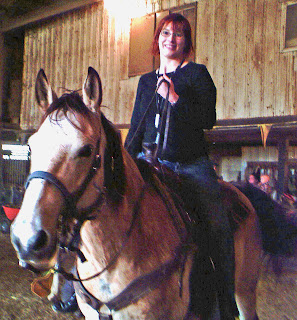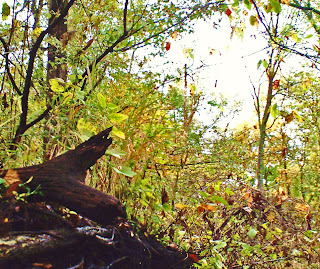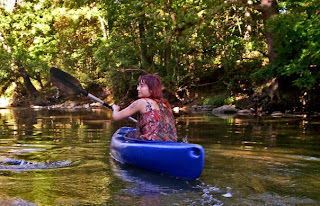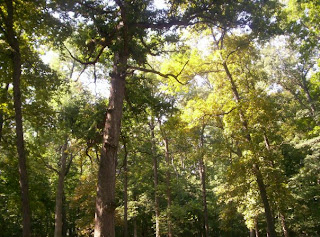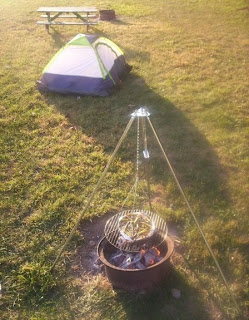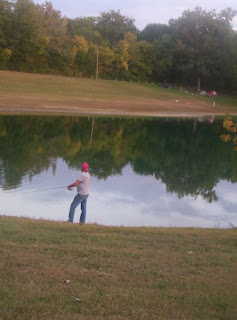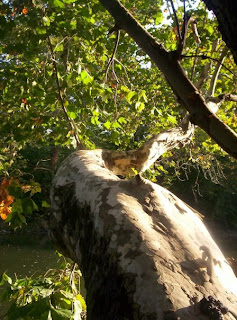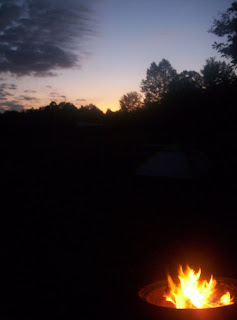It happened for me in my junior year of high school, in American History class, and my life just hasn’t been the same ever since. My teacher, Mr. Jay Rogers, was mostly to blame.
Mr. Rogers taught with his whole being. Our desks were arranged in a semi-circle, and he would move around the room while he talked. Usually he walked at a slow pace, but sometimes he would dash across the room from student to student, the intensity of his arm gesticulations and eye contact revealing shamelessly his passion for the matter at hand.
It happened on the day he gave a lecture on the Civil Rights movement in the first person. The We’s and I’s that he spoke of seemed to do so much in response to the pain that steeped their world. His voice had reached a powerful crescendo when he abruptly stopped. His eyes moved from one student to another slowly, making eye contact with each.
“We had to do it, because we knew that suffering and injustice were important,” he said. “Being a citizen means more than being a legal adult resident of a nation. Being a citizen entails that one acts within the public sphere in order to bring forth a more just society. We needed to act because we cared.”
I had never previously been encouraged so directly to consider what it meant to be a citizen in one’s community. But I understood, right then and there, that I could not let myself be content to stand idly by when confronted with matters of injustice in the world.
It is ten years later, but it was the continuing effects of Mr. Rogers’ thoughts on citizenship that brought me to the Citizens for Global Solutions’ People’s Foreign Policy deliberations in Indianapolis on September 22. Although my political activity has changed during that time—waxing and waning some, and growing away from angry protests and towards deliberations, conversations, letters, and literary activities—it has always seemed of great importance to mobilize my role as a citizen by speaking out against injustice with my voice, pen, and actions.
The speakers at the deliberations were—
· Dr. Robert Geroux , assistant professor at Marian College currently working on a book addressing the duty of doctors and social scientists to protect human rights during wartime,
· Sheila Suess Kennedy, J. D., an associate professor in the School of Public and Environmental Affairs at IUPUI, associate Editor of Policy Sciences, columnist for the Indianapolis Star, and author of several books, including God and Country: America in Red and Blue,
· Keni Washington, founder and managing director of the Earth-Solar Technologies Corporation, a company that works to create more mindful ways of obtaining and distributing energy (such as the Boulevard Plaza project to create a sustainable community in Indianapolis), as well as a jazz musician and composer,
· Dr. John Clark, senior fellow at Sagamore Institute and adjunct professor at IUPUI who teaches courses about terrorism to the FBI’s Midwest Counterterrorism Taskforce,
and
· Dr. Michael Goodhart, professor of Political Science and Women’s Studies at the University of Pittsburgh and past president of the American Political Science section on Human Rights.
Although all of the speakers were though provoking, well informed, and engaging, there were three ideas that were presented that seemed especially significant for the pursuit of a more just and less violent world community.
The first of these ideas was presented by Sheila Suess Kennedy. The focus of her talk was the importance of creating a community that is capable of sustaining genuine communication. “Disputes over foreign policy cannot be understood without reference to a larger phenomenon, sometimes called the ‘culture war,’” she said. “Americans tend to conduct our arguments in shades of black and white. America is irredeemably evil, or America is all good…. Such extremes are, to put it mildly, unhelpful.”
She continued to say that the difficulty in finding an effective U. S. foreign policy is grounded in the intensity of an “ongoing struggle to control the national narrative.” It is therefore important that all concerned citizens—including those in colleges—examine their beliefs regarding the role of the United States in the world—“Foreign policy attitudes are a product of our national self-image,” she said, and concluded that “we have to recognize the different realities Americans occupy, and endeavor to communicate despite them.”
The second idea that seemed particularly pertinent was presented by Keni Washington. He said that citizens of the United States need to recognize that one result of U. S. involvement in the Middle East is the impending destruction of another culture, and that the primary casualties of this and all wars are not the soldiers, but the civilians. As citizens of the United States, we are parties to this atrocity, and thus we should be called into action. He said that Americans who are aware of the injustice and illegality of the U. S. military action in the Middle East are “obligated to press for the indictment of Bush.”
The third idea that I found particularly interesting was made by Dr. Geroux. “America will of course continue to be an economic powerhouse,” he said, “but in terms of foreign policy it will become increasingly marginalized. It has already lost its moral authority because of legal policies that served as the superstructure behind GTMO and Abu Gharib.”
The implication is that it is imperative for the future security of the United States for all U.S. citizens to consider the ethical values that are driving the actions of its government and military.
Whether or not you agree with these conclusions, it is obvious that the issues that confront our generation are staggering in scope and profound in implication. It is not an act of pacifism and nonviolence to remain silent and passive in the face of such a situation; it is an act of complicity.
I would like for all those who read this to consider how they can more fully mobilize themselves as citizens in the world community, and what values lay behind their political beliefs.
To not be passionately arisen to action in the face of such morally and politically dynamic a time as ours seems to me to be halfway to being dead. All of us who hope for a more peaceful world community must find a way to express ourselves publicly and loudly with both our voices and our actions. Speak out.
(published in Manchester College's weekly newspaper, the
Oak Leaves, on October 5, 2007)
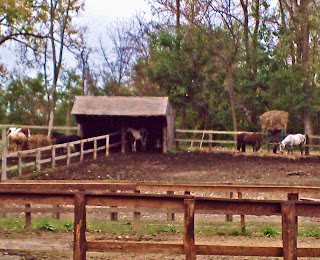 That was certainly my experience. I went on a 1-hour guided trail ride around their property. My horse’s name was Starbuck, a handsome fellow full of energy. We wound around the trails on the property, passing beautiful scenery that included streams, forested areas, and a small lake.
That was certainly my experience. I went on a 1-hour guided trail ride around their property. My horse’s name was Starbuck, a handsome fellow full of energy. We wound around the trails on the property, passing beautiful scenery that included streams, forested areas, and a small lake. 